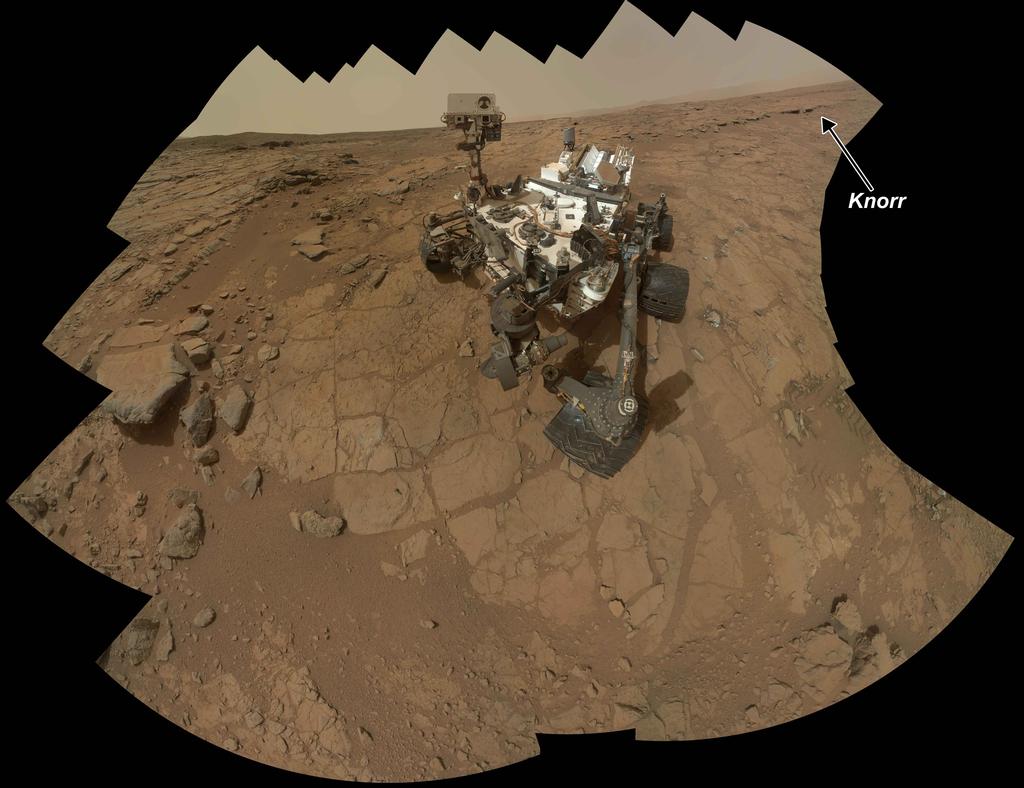
NASA's Mars rover Curiosity has fully recovered from a glitch that knocked out its main computer system late last month, space agency officials say.
The Curiosity rover has now resumed science work inside the Red Planet's huge Gale Crater. The car-size robot is monitoring Martian radiation and weather again, and it delivered more samples of powdered rock from a previous drilling operation to its onboard instruments on Saturday (March 23), rover team members said.
"We are back to full science operations," Curiosity deputy project manager Jim Erickson, of NASA's Jet Propulsion Laboratory (JPL) in Pasadena, Calif., said in a statement Monday (March 25).
A complicated recovery
Curiosity had been operating pretty much flawlessly on the Red Planet until late February, when a memory glitch corrupted its main, or A-side, computer. Engineers swapped the rover over to its backup (B-side) computer, spurring Curiosity to go into a precautionary "safe mode" on Feb. 28. [Curiosity Rover's Latest Amazing Mars Photos]
As the team worked to fix the A-side, engineers also spent time checking out the B-side and configuring it for surface operations, as the A-side had been running Curiosity since a few weeks before the rover touched down on Mars the night of Aug. 5.
The rover's 10 science instruments can all be operated by either the A-side or the B-side computer, but other gear is not so flexible. For example, each of Curiosity's 12 engineering cameras is linked only to the main or the backup computer, researchers said.
Get the Space.com Newsletter
Breaking space news, the latest updates on rocket launches, skywatching events and more!
"This was the first use of the B-side engineering cameras since April 2012, on the way to Mars," JPL's Justin Maki, team lead for these cameras, said in a statement. "Now we've used them on Mars for the first time, and they've all checked out OK."
Bringing the rover back up to speed has been delayed a few times by other events as well. In early March, engineers briefly put Curiosity on standby again to wait out a Mars-bound solar eruption. And on March 16, a separate software issue sent Curiosity into safe mode for a few days.
But all appears to be going well now. The B-side is running fine, NASA officials say, and the A-side is available as a backup if needed.
Communications blackout coming
Curiosity is getting back to work just in time for a lengthy communications blackout.
For much of next month, Mars will be almost directly behind the sun from Earth's perspective. Our star can disrupt interplanetary signals in this alignment, which occurs every 26 months and is known as a Mars solar conjunction.
Mission engineers don't want to take the chance of a corrupted command confusing the rover, so no directions will be sent to Curiosity from April 4 through May 1. Curiosity will continue to operate during this time, using a set of commands relayed in advance.
NASA's other Red Planet robots, such as the Opportunity rover and the Mars Reconnaissance Orbiter, will also be on their own for much of April.
Curiosity is the centerpiece of NASA's $2.5 billion Mars Science Laboratory mission, which seeks to determine if the Red Planet could ever have hosted microbial life.
The rover has already accomplished its main goal. Earlier this month, Curiosity scientists announced that Mars was indeed habitable billions of years ago, basing their conclusion on the rover's analysis of rock samples it drilled from deep within a Red Planet outcrop.
The powdered rock samples Curiosity recently delivered to its instruments are additional specimens collected from that initial drilling operation. The rover won't drill another rock until after the Mars solar conjunction, team members have said.
Follow Mike Wall on Twitter @michaeldwall. Follow us @Spacedotcom, Facebook or Google+. Originally published on SPACE.com.
Join our Space Forums to keep talking space on the latest missions, night sky and more! And if you have a news tip, correction or comment, let us know at: community@space.com.

Michael Wall is a Senior Space Writer with Space.com and joined the team in 2010. He primarily covers exoplanets, spaceflight and military space, but has been known to dabble in the space art beat. His book about the search for alien life, "Out There," was published on Nov. 13, 2018. Before becoming a science writer, Michael worked as a herpetologist and wildlife biologist. He has a Ph.D. in evolutionary biology from the University of Sydney, Australia, a bachelor's degree from the University of Arizona, and a graduate certificate in science writing from the University of California, Santa Cruz. To find out what his latest project is, you can follow Michael on Twitter.









